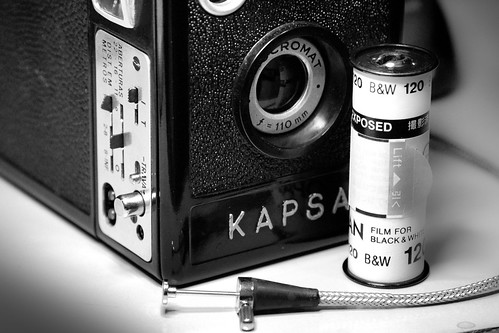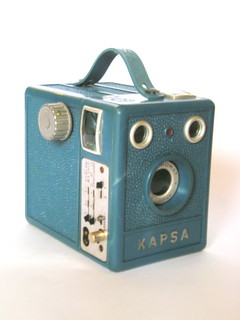Difference between revisions of "Kapsa"
m (+wikilink to Vasconcellos) |
(→Notes: pic) |
||
| Line 22: | Line 22: | ||
<references /> | <references /> | ||
| + | {{Flickr_image | ||
| + | |image_source= https://www.flickr.com/photos/ricardoinada/19177434170/in/pool-camerawiki | ||
| + | |image= http://farm4.staticflickr.com/3860/19177434170_5c84d776b5.jpg | ||
| + | |image_align= left | ||
| + | |image_text= control panel, lens and film roll | ||
| + | |image_by= Ricardo Inada | ||
| + | |image_rights= wp | ||
| + | }} | ||
{{Flickr_image | {{Flickr_image | ||
|image_source= http://www.flickr.com/photos/sdamelio/5565941524/in/pool-camerawiki | |image_source= http://www.flickr.com/photos/sdamelio/5565941524/in/pool-camerawiki | ||
| − | |image= http://farm6.static.flickr.com/5104/ | + | |image= http://farm6.static.flickr.com/5104/5565941524_12fb0c31f8_n.jpg |
|image_align= left | |image_align= left | ||
|image_text= | |image_text= | ||
Revision as of 21:15, 12 July 2015

|
| image by Nibelunga O^O (Image rights) |
Kapsa is a Bakelite (and later other plastic) 120 or 620 film 6x9cm/6x4cm box camera made in Sao Paolo, Brazil by D. F. Vasconcellos (DFV)[1]. It was introduced in the early 1950s. It has a hinged mask in the film chamber for conversion to 6x4cm frames. The 110mm Vascromat lens (presumably a meniscus achromat) has two auxiliary lenses giving three focus distances; 1-2 metres, 2-8 metres, and 8 metres-infinity. The camera is fitted with a sector shutter with a speed of 1/100 second and B, with three aperture sizes, f22, f16, and f11. On one side it has a metal panel with all the controls except the film advance knob. Of course it has the two brilliant viewfinders which are typical for box cameras.
It was considered a budget camera in comparison to more advanced cameras of the time due to its limited focusing abilities.
Sources/links
- "Brazil's Secret Camera" from Targo Studios' Retro Cameras
- Another Kapsa example by Gerson Lessa on Flickr
- Kapsa user group on Flickr
Notes
- ↑ McKeown, James M. and Joan C. McKeown's Price Guide to Antique and Classic Cameras, 12th Edition, 2005-2006. USA, Centennial Photo Service, 2004. ISBN 0-931838-40-1 (hardcover). ISBN 0-931838-41-X (softcover). Page 944.

|
| control panel, lens and film roll image by Ricardo Inada (Image rights) |

|
| image by Damélio (Image rights) |